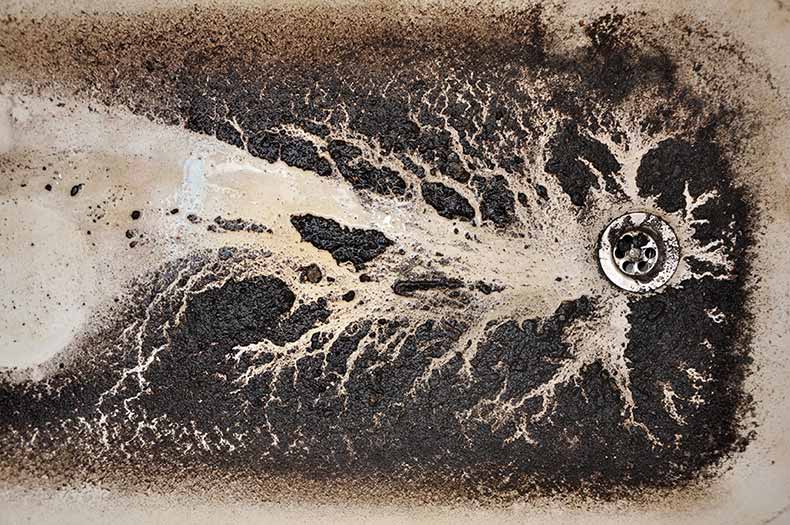How do you really feel with regards to Why sewage is coming up through your bathtub?

Sewage backup in the bath tub can be an upsetting and unsanitary problem for any type of house owner. Not only is it inconvenient, yet it also poses significant wellness dangers and shows underlying issues with the plumbing system. Comprehending why sewage is turning up via the bathtub is crucial for taking ideal activity to resolve the problem properly.
Introduction to the Issue
Common Reasons for Sewer Backup
Blockages in the Drain Line
One of the most usual reasons for sewer backup is a clog in the sewage system line. This can take place due to the build-up of debris, grease, or international objects in the pipelines, preventing correct circulation and causing sewer to back up right into your bath tub.
Tree Root Breach
Tree origins seeking dampness and nutrients can infiltrate sewer lines through little fractures or joints. Gradually, these roots can expand and expand, triggering considerable damages to the pipelines and leading to sewage back-up problems.
Understanding the Problem
When sewage starts backing up into the tub, it's a clear indication of a trouble with the water drainage system. The wastewater that ought to be streaming away from your home is instead locating its way back right into your living space, which can cause significant damage and health hazards.
Possible Reasons
Several factors can contribute to sewage back-up in the tub. From blockages in the sewage system line to concerns with the plumbing infrastructure, identifying the root cause is essential for finding a remedy.
Aging Facilities
Older homes may have outdated plumbing systems that are much more prone to rust, cracks, and deterioration. As pipes age, they come to be extra prone to leakages and clogs, raising the possibility of sewage backup incidents.
Heavy Rainfall or Flooding
Throughout periods of heavy rainfall or flooding, the sewer system might come to be overwhelmed with excess water, triggering back-ups and overflows. This can cause sewage supporting into tubs and various other components inside the home.
Signs of Sewer Backup
Foul Odors
Undesirable odors originating from drains or fixtures, specifically in the shower room, might suggest sewage back-up problems. These smells are typically strong and consistent, signaling a trouble that needs immediate focus.
Slow Draining Fixtures
Bath tubs, sinks, and commodes that drain gradually or not in any way could be experiencing sewage back-up. If numerous fixtures are influenced concurrently, it's likely that the issue originates from an usual point, such as the main sewer line.
Gurgling Noises
Unusual gurgling or bubbling noises coming from drains when water is running somewhere else in the house are a sign of air caught in the plumbing system. This air accumulation can result from sewer back-up and must be explored immediately.
Wellness Dangers Related To Sewer Back-up
Contamination of Supply Of Water
Sewer backup can contaminate the water in your house, posing a significant health and wellness risk to you and your family members. Direct exposure to contaminated water can cause stomach issues, skin infections, and other diseases.
Mold Growth
Wetness from sewer backup can produce suitable conditions for mold and mildew development in your home. Mold spores can exacerbate breathing issues and cause allergies in sensitive individuals, making timely clean-up essential.
Spread of Condition
Sewage contains dangerous bacteria, infections, and bloodsuckers that can trigger a series of illness, consisting of liver disease, cholera, and gastroenteritis. Entering contact with sewer or contaminated surfaces puts you in danger of infection.
Cleaning Up After Sewer Backup
Disinfection Procedures
Thoroughly disinfect and sterilize influenced locations after sewer back-up to get rid of unsafe microorganisms and stop mold and mildew development. Usage appropriate cleansing items and safety gear to make sure risk-free and effective cleanup.
Restoration of Affected Locations
Fix any kind of damage to flooring, walls, or components triggered by sewage backup. Depending on the extent of the damage, you might need to replace carpeting, drywall, or various other materials to recover your home to its pre-loss condition.
Immediate Actions to Take
Switching Off Water System
In case of sewer backup, it's necessary to turn off the supply of water to stop more contamination and damage. Situate the major water shutoff valve in your house and closed it off until the concern can be solved.
Contacting an Expert Plumber
Taking care of sewer back-up is not a DIY job. Contact an accredited plumber with experience in managing sewage-related issues to evaluate the situation and execute essential repair services or cleanups.
Preventing Contact with Polluted Water
Up until the sewer back-up is solved, prevent contact with infected water to prevent the spread of bacteria and virus. Wear safety equipment if you must be in the affected location and wash your hands thoroughly later.
Preventive Measures
Regular Maintenance of Drain Lines
Set up routine assessments and upkeep of your drain lines to determine and address possible concerns before they rise into significant problems. This can include clearing out particles, inspecting for tree root invasion, and fixing any kind of broken pipes.
Installing Bayou Valves
Think about setting up bayou shutoffs in your plumbing system to prevent sewage from flowing back into your home during periods of heavy rainfall or flooding. These shutoffs instantly close when water starts backing up, safeguarding your building from contamination.
Proper Disposal of Home Waste
Stay clear of flushing anything besides bathroom tissue and human waste down the toilet to stop blockages and obstructions in the sewer line. Dispose of grease, oil, and various other home chemicals effectively to lessen the threat of plumbing problems.
Why is there sewage coming up from my bathtub?
These gas fumes, like hydrogen sulfide – the gas that leaves a rotten egg smell in its wake and is highly flammable and toxic – can be hazardous to your health. Sewage poses major health risks as it contains harmful bacteria and microorganisms that can be dangerous if exposed to them.
Sewage cleanup should be considered an emergency.
So, why is there sewage coming up from your bathroom? There are several common causes of a sewage backup.
The most common reason for sewage coming up through your bathroom is a clogged sewer line. All plumbing in your bathroom connects to a single drain pipe that leads to the sewer line under your house. This drain line carries all wastewater and sewage away from your home to the city’s sewer system.
When the sewer line becomes clogged or blocked, wastewater has nowhere to go but back toward your house. This results in sewage coming up through your drains, often starting with your tub or shower.
Another culprit may be the sewage ejector pump, which is used when a bathroom, laundry room or any other type of plumbing fixture is located below the level of the main sewer or septic line flowing from the house. Most commonly, ejector pumps are used in homes with basement bathrooms or laundry rooms.
When you experience sewage coming up through your bathtub, it’s always best to contact a professional. Attempts to fix a clogged sewer line without experience often lead to more plumbing damage.
Make sure that no one enters the affected area, and open as many windows as possible. Pre-treat the flooded area with small splashes of chlorine bleach. Wear protection gear like rubber gloves, a mask, and water-resistant coveralls.
https://www.shawlocal.com/the-herald-news/sponsored/2022/08/17/omega-plumbing-10199038/

As a serious reader on What to Do if Sewage Starts Coming Up Through Your Bathtub, I was thinking sharing that article post was sensible. So long as you enjoyed our blog entry plz make sure you remember to share it. I thank you for reading our article about What to Do if Sewage Starts Coming Up Through Your Bathtub.
Book A Free Estimate
Comments on “Deciphering the Causes of Sewage in the Bathtub”